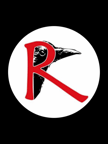
What the Crow Symbolizes in Romeo and the Crow?
Crows as Symbolic Birds in Narrative Therapy
The interaction between art and science reveals fascinating facts and culturally shared beliefs about crows. These commonly remembered black and noisy birds are now proven by science to be social creatures with outstanding abilities in problem-solving and communication. Crows exhibit remarkable intelligence, including large brains relative to their body size, flexible problem-solving skills, excellent memory, social learning, complex vocal communication, self-awareness, deceitful behaviors, and the ability to recognize individual humans.
In various mythologies and cultural narratives, crows hold significant symbolic roles:
Native American Mythology: Ravens are seen as creators and tricksters, while crows are saviors, highlighting their role in bringing light and saving the world.
Norse Mythology: Odin’s ravens, Hugin and Munin, symbolize the importance of knowledge and memory in storytelling.
Literature: Edgar Allan Poe’s "The Raven" and Charles Dickens' "Barnaby Rudge" use crows to symbolize death, the supernatural, and mystery.
Art: Japanese Edo period screens and Vincent van Gogh’s "Wheat Field with Crows" depict crows to symbolize various aspects of life and nature.
Language and Proverbs: Phrases like "as the crow flies" and "eating crow" symbolize directness, humility, and the consequences of actions.
Omens and Augury: Practices like crow augury in Tibet and Greek and Roman augury highlight crows' role as mystical storytellers.
Transformation and Deceit: Folklore depicts crows as shape-shifters and deceivers, teaching lessons about life's complexities and the importance of wit and cunning.
Modern Cultural References: Films like Alfred Hitchcock's "The Birds" use crows to symbolize fear and the unknown.
These multifaceted characteristics make crows powerful symbols in cultural and literary narratives, enriching the storytelling tradition. Their widespread presence, intelligence, mystical appearance, role in ecosystems, cultural interactions, symbolism in augury and omens, and adaptability and survival resonate with human experiences and beliefs.
In narrative therapy, clinicians can use the symbolism of crows to help clients explore themes of intelligence, problem-solving, mystery, adaptability, and resilience. Crows' ability to thrive in diverse environments mirrors human adaptability and resilience, making them relatable symbols in stories about overcoming challenges and thriving against odds. By incorporating the rich cultural and symbolic significance of crows, clinicians can facilitate meaningful and transformative storytelling in therapy.
***This description was generated through a collaborative effort between the clinician and Copilot, Microsoft's productivity assistant AI.
Romeo Bidar
BSW, MSc. McGill University alumni
Thérapeute de couple et famille; Psychothérapeute
Couple and Family Therapist, Psychotherapist
Connect
healing.journey@romeoandthecrow.net
+14387010429
© 2025. All rights reserved.
